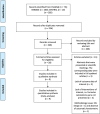Intraocular lens power calculation accuracy in patients with keratoconus: Network meta-analysis and systematic review
- PMID: 39626768
- PMCID: PMC12129720
- DOI: 10.1111/ceo.14470
Intraocular lens power calculation accuracy in patients with keratoconus: Network meta-analysis and systematic review
Abstract
Background: Accurate intraocular lens (IOL) calculation in eyes with keratoconus (KCN) poses significant challenges. While various formulas, including KCN-specific ones, have been investigated, the optimal calculation method remains inconclusive.
Methods: The study was pre-registered in PROSPERO (CRD42023483119). PubMed, Embase and CENTRAL electronic databases were systematically searched for studies comparing IOL power calculation formulas in eyes with KCN. The percentage of eyes with a prediction error (PE) within ±0.50 D and ±1.00 D, the mean PE and the mean absolute error (MAE) were compared using a random effect model in Bayesian network meta-analysis.
Results: Nine retrospective clinical studies were included, totalling 623 eyes and 25 calculation methods. The Barrett True-K formula for KCN with measured posterior cornea (BTK MPC) achieved the highest ranking for the percentage of PE within ±0.50 D and ±1.00 D, mean PE, and MAE, with surface under the cumulative ranking (SUCRA) of 95%, 95%, 97% and 95%, respectively. Subgroup analysis showed that for the predictability rates within ±0.50 D and ±1.00 D, the best ranking formulas were: Emmetropia Verifying Optical (EVO) (85%) and BTK MPC (78%), respectively, in mild KCN; BTK with predicted posterior cornea (PPC) (85%) and MPC (88%), respectively, in moderate KCN; and Kane KCN for both metrics in severe KCN (84% and 95%, respectively).
Conclusion: The BTK MPC formula ranked highest across various metrics, suggesting its superior accuracy for IOL calculations in KCN. The optimal formulas may differ based on KCN severity, with current evidence suggesting potential advantage of Kane KCN for severe cases.
Keywords: Kane keratoconus; cataract surgery; intraocular lens power calculation; keratoconusBarrett true K.
© 2024 The Author(s). Clinical & Experimental Ophthalmology published by John Wiley & Sons Australia, Ltd on behalf of Royal Australian and New Zealand College of Ophthalmologists.
Conflict of interest statement
The authors declare no conflicts of interest.
Figures







References
-
- TT MM, Anderson RJ, Roberts C, et al. Repeatability of corneal topography measurement in keratoconus with the TMS‐1. Optometry and Vision Science [Internet]. 2005;82(5):405‐415. http://journals.lww.com/00006324-200505000-00011 - PubMed
-
- Kovács I, Miháltz K, Németh J, Nagy ZZ. Anterior chamber characteristics of keratoconus assessed by rotating Scheimpflug imaging. J Cataract Refract Surg [Internet]. 2010;36(7):1101‐1106. https://journals.lww.com/02158034-201007000-00007 - PubMed
-
- Melles RB, Holladay JT, Chang WJ. Accuracy of intraocular lens calculation formulas. Ophthalmology. 2018;125(2):169‐178. - PubMed
Publication types
MeSH terms
LinkOut - more resources
Full Text Sources

